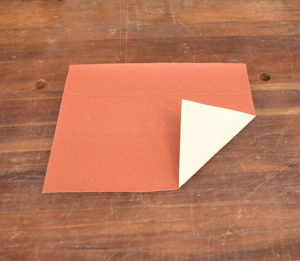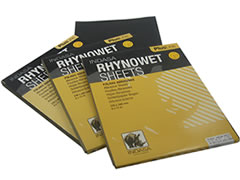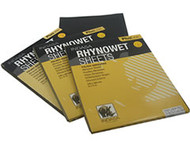Back(er) Story
04 08 2015

Over the years writing these sanding supply blogs, we have spent a pretty fair amount of time discussing the merits of different abrasives, the science behind grit choice, and even the variety of sanding disks, sanding belts, sheets, and rolls that constitute sanding supplies as a group. But we have only really just touched on the backers that keep all the abrasives working together. There are a surprising number of backing materials that sanding products are made from, and various choices within each material. So let's examine the story "behind" your sanding supplies.

Since sandpaper is virtually a generic term for all sanding supplies, we can logically start with paper backing. Paper is the most common material used as a backer because it is the least expensive and easiest to manufacture. But even the "simple" paper comes in 6 different weights (thicknesses) designated A through F from lightest to heaviest. Paper is a fine backer for many sanding tasks, but falls apart rapidly if wetted, and does not handle high stress or temperature well.
Cloth is the second most common backer used. It may be cotton, polyester or rayon, and it too is designated by weight. But just to make thing difficult, cloth ratings are J,X,Y,T and M from light to heavy! Cloth is typically used for sanding belts or in roll form for drum sanders. The stresses and heat involved in belt sanding require a more sturdy backer than paper. From hand-held belt sanders to wide belt sanders, pretty much all of the belts are cloth. Cloth backers are a bit more water resistant than paper, but for wet sanding, other choices are made for the backer.

Wet sanding uses water or other liquid lubricants to create a "slurry" that aids in the smoothing of a surface. It is typically used as a finish sanding technique for metals, plastics, fiberglass and the like, but we have also had good results using the technique on wood. Obviously, the backing for wet/dry sanding supplies would need to be waterproof. Plastic films, such as mylar, are common as a rubber impregnated layers of paper.
Knowing the backers available, and choosing the best one for your sanding task, can improve your results and save you time and trouble. Lighter, more flexible backers are best for sanding odd shapes like profile moldings, while very stiff backers remove material more aggressively from flat surfaces. Sanding supplies may seem simple, but there is a surprising amount of science that goes into them!
As ever, we invite you to share your thoughts and knowledge with us by commenting here on the blog, on our Facebook page, or via Twitter. -2Sand.com
And if you like these blogs, be sure to share them with friends and co-workers!

